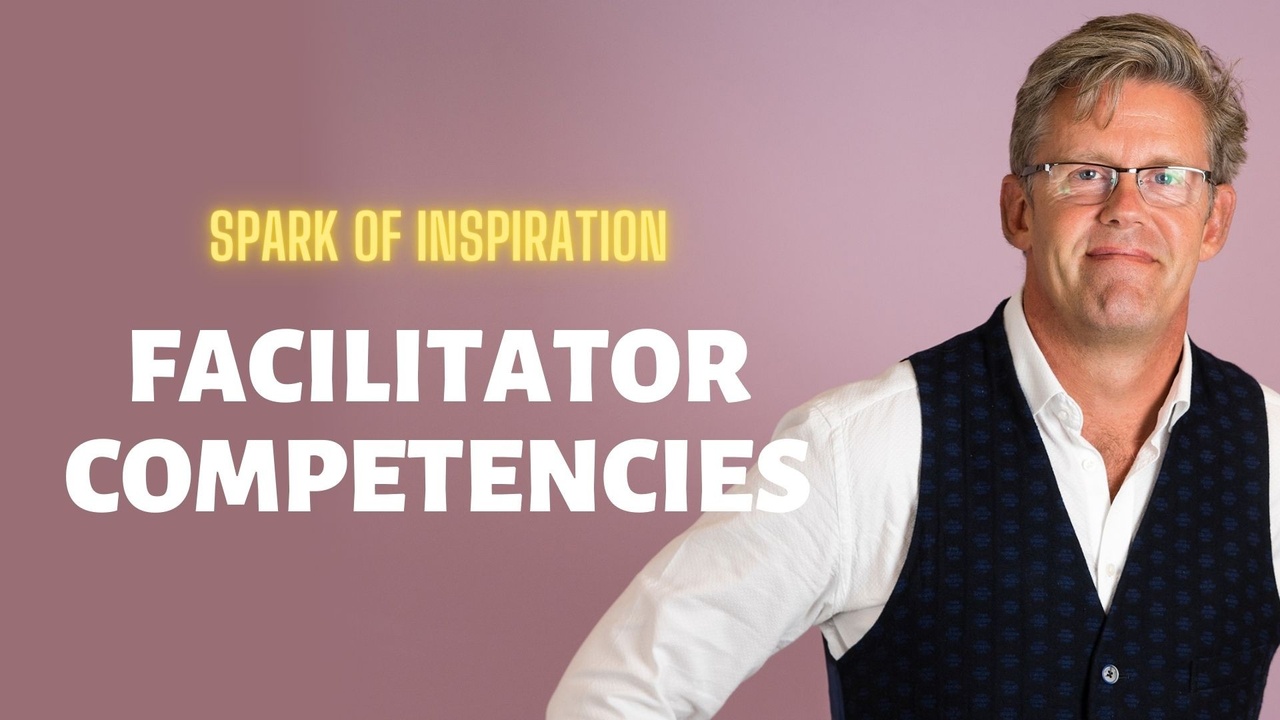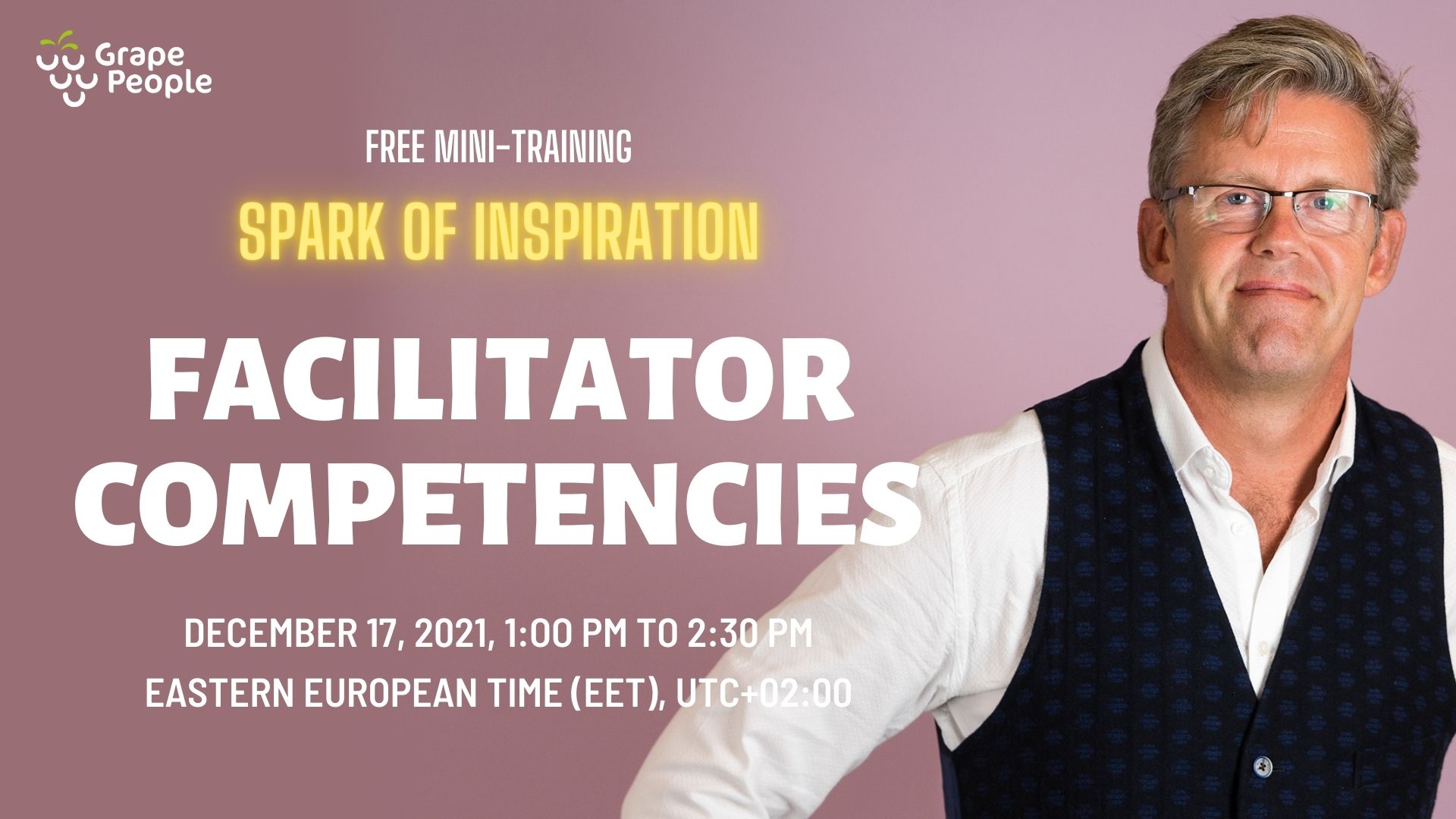The Competencies You Need to Be a Great Facilitator

To be a great facilitator, you do not have to copy the style of other successful facilitators. There is more than one way to do the job right. For example, some facilitators take a light-hearted approach and love to tell a good joke or be a bit self-deprecating. Others prefer to be more serious and reserved. Both styles can succeed, and you can choose what is suitable for you by following the classic piece of life advice you probably heard as a child; Just be yourself.
However, you need to have a solid foundation of knowledge, traits, and habits. This foundation is your groundwork for how you approach group leadership. The very best facilitators might have some differences in how they manage groups and approach a situation, but they all share the same core competencies that support their facilitative styles. Today I would like to share with you five competencies that all facilitators should have.
1. Neutral role
It can be challenging for groups to make decisions. This challenge is one of the key things that keeps facilitators busy! The decision-making process for groups is much easier if the facilitator is 100% content-neutral. This means they do not censor ideas, edit the group, or push people toward a particular outcome. The facilitator cannot give answers for the group either, even if the group is struggling with a topic or finding an exercise hard. Instead of dropping them hints, you can try and empathize with them and say something like, “Wow, this really is a tricky topic. Can you think of any solutions?”
2. Choosing the correct stages for a workshop
Meetings and workshops need clear and logical stages to be effective. It’s a facilitator’s responsibility to organize the workshop stages correctly so that the group tools they use are as effective as possible. I use a 3-stage process that starts by clarifying the content. This stage is called the clarifying stage. Next comes the solutions stage, where the group figures out the next steps to take. Finally, the workshop ends with an action stage, where people think of concrete actions that they will take to achieve the solutions. Once they do this, they commit to these actions by assigning a person and a deadline to each action. This entire process of workshop design is called CSA. Each stage also contains tools for emergent and convergent thinking to ensure that the process is logical and intuitive for everyone participating. If tough topics feel easy for a group, the facilitator can trust that they are doing a good job.
3. Choosing the right emergent and convergent tools
Remember the emergent and convergent tools that are a part of the CSA process? Choosing the right ones is essential. First, you need to know how to select tools to help groups think of many ideas, which is called emergent thinking. Then, once there are many ideas to choose from, you need to help groups decide what the best ideas are. Convergent tools are all about idea selection and will help you do this. Before facilitation became popular, traditional brainstorming methods were extremely popular. The problem was that they did not allow for criticism of ideas. In other words, they were all about emergent thinking and did not support idea selection at all. Unless used with a convergent tool, this led to an unbalanced and difficult decision-making process.
4. Creating a sense of psychological safety
Facilitators always need to create a sense of psychological safety when they work with groups. Psychological safety is a general term. To be more specific as it relates to facilitation, the main focus is creating a comfortable and safe environment where people can share their thoughts, listen to others, and participate in group activities. Remember that for some folks, it is easy to share their opinions, and the challenge for a facilitator is to get them to stop talking! But other people are more introverted and have a natural tendency to avoid speaking in front of others or working in pairs or groups. One tip to help these people is to use an icebreaker activity- a relaxed activity to begin a workshop that deals with a fun and easy topic. It is easier to talk with one person than it is to a room of 20 people, so try using an icebreaker that puts people into pairs. After this, people are warmed up, and the rest of the workshop will not feel overwhelming to them. Another method to help groups feel psychologically safe is to explain clearly what you are doing and why. This way, people will see the bigger picture and understand that there is a purpose to the things you ask them to do.
5. Presence
The last core competence I want to discuss today is presence. When you work with groups, you need to be observing and listening. If you ask them to talk about something in pairs for five minutes, this does not mean that you have five minutes to go over the rest of your workshop plan or try to remember if you took the garbage out that morning or not. Instead, circulate the meeting room, or if it is a virtual session, pop into each breakaway room to listen to how things are going and check if you can provide any support. There is no textbook way to have a good presence as a facilitator, and like the beginning of the blog stated, there are different ways to get the job done. So, develop your own style and habits that support the group and let them know you are always available to help them. By being present, you will be able to tell when people run into an obstacle, and you will know when to interject with an encouraging comment or sit back and watch participants help each other.
There are a few other core competencies that facilitators need, but these five are a great starting point to keep in mind the next time you are facilitating.
If you wish to learn more about these topics,
check out our upcoming training >>
⭐ Learn more about Breakthrough Decision Making >> ⭐
About the trainer:
Pepe Nummi is a trailblazer of facilitation and an author in Finland. He is the first certified professional facilitator in the country and one of the founders of Grape People – Finland’s first company focusing on facilitation. Over the course of his long career, he has trained over 15,000 people in more than 20 different countries.
Get to know Pepe: LinkedIn | Twitter
Feel free to reach out in case you would like a tailored training
for your team or organization: [email protected].
We are more than happy to help you!




